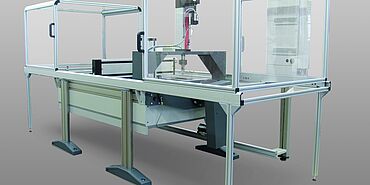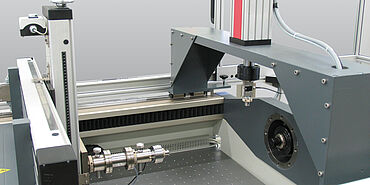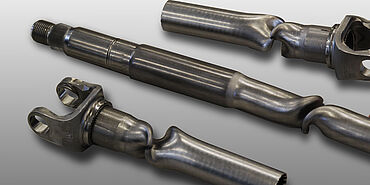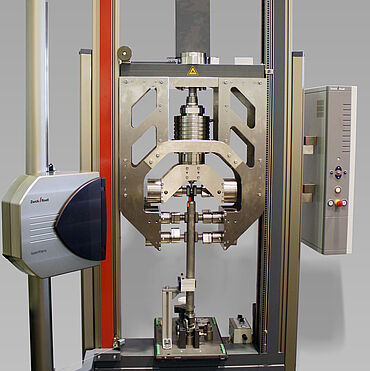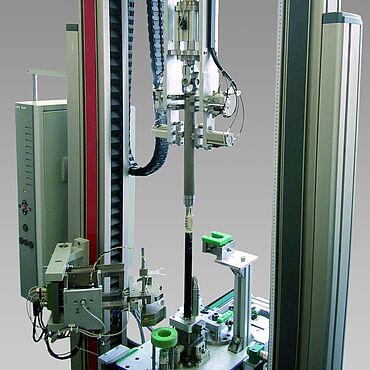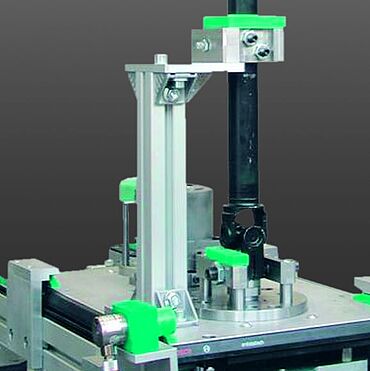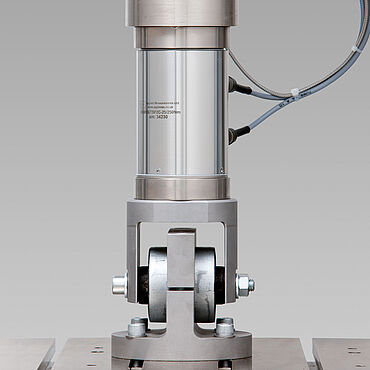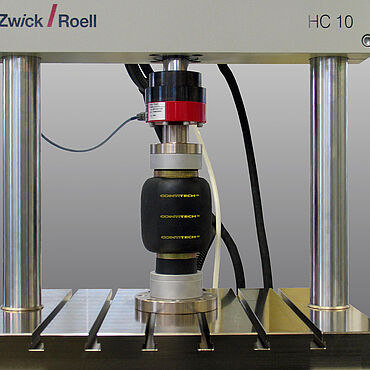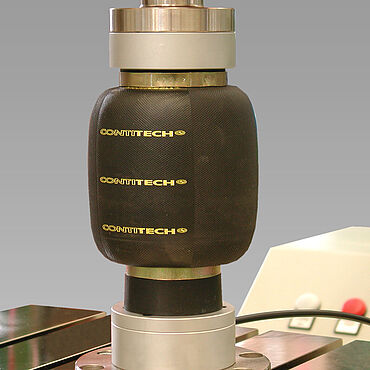Testing of Steering Linkage
This testing system is used to determine the friction forces and moments, including the stick slip effect, inside and outside the test axis.
ZwickRoell solution: Multi-axis testing machine with ZwickRoell Z020
- Horizontal test load Fmax 20 kN
- Three separately controlled drive axes (axial, lateral force, and torsion)
- Three manually adjustable axes, allowing the widest possible range of steering linkage configurations
- testXpert testing software for control of the three axes
- CE-compliant safety housing
- Universal perforated plate for attaching fixtures
Testing of steering shafts
To facilitate automated production of telescopic steering shafts for trucks, ZwickRoell testing machines can be integrated into a fully-automated assembly line. A testing machine is used to determine the maximum torsion angle in the middle of the production process, allowing process-oriented analysis of the previous assembly steps. A special angled sensor was developed for the high precision requirements of relative torsion angle measurement. A second testing machine is placed at the end of the production line to determine the displacement force of the steering spindle.
Testing of Steering Columns
In order to reliably test steering column height adjustment, the testing system must simulate the height adjustment process realistically. For this, an electromechanical testing actuator is ideal since it can be positioned flexibly in order to axially apply the desired loads to the steering column. In the example shown, height adjustment is activated in several thousand cycles in order to uncover weaknesses that would normally only become apparent over the course of the component's life.
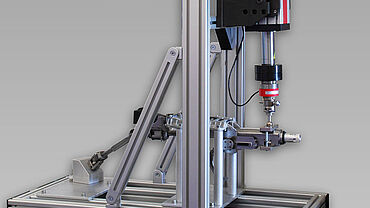
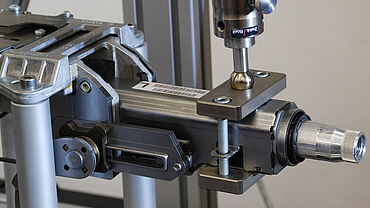
Testing of rubber-metal dampers
A testing system based on a servohydraulic testing machine was developed to determine, among other things, the quasi-static and dynamic stiffness and the loss angle and loss factor of rubber-metal bearings. In addition, the system is equipped with a safety light curtain and supplementary two-handed control. The test result is displayed via a red/green digital tolerance indicator, with an audible prompt via an electronic buzzer, allowing the operator to attend to other tasks during the test. Parameterization of the test sequence, as well as results evaluation and display, are handled by ZwickRoell’s field-proven testXpert testing software.
